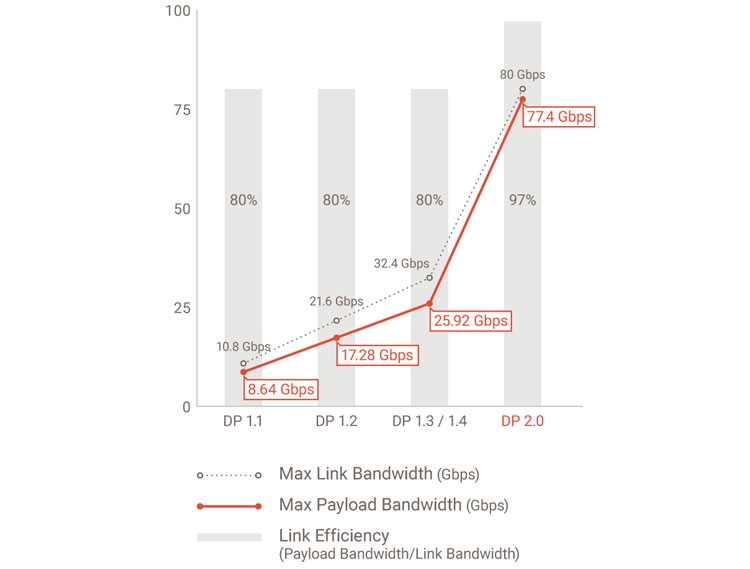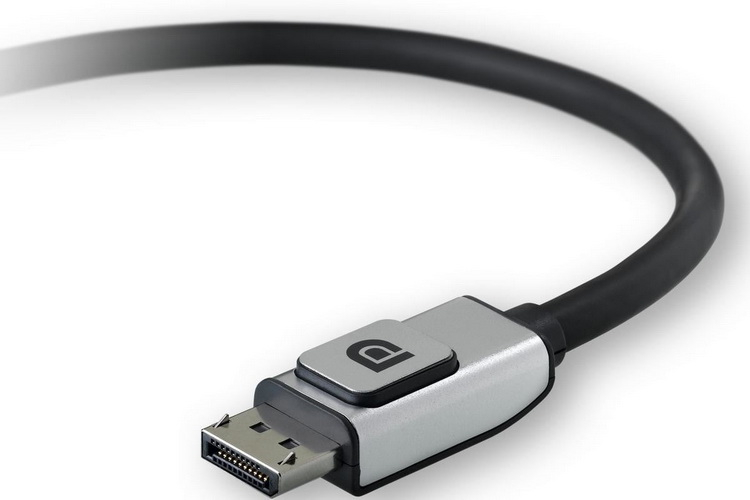It has been almost two years since the Video Electronics Standards Association (VESA) first published the DisplayPort 2.0 interface specifications, promising support for 8K resolution and high refresh rates. The first monitors to support the new standard were expected by the end of 2020. VESA recently announced that the release of the first DisplayPort 2.0 monitors has been delayed, but will be available later this year.
“DisplayPort 2.0 monitors are currently in development. They have not yet entered the market. DisplayPort 2.0 is implemented in systems on a chip, which will appear in new products this year “, – quotes the words of the representative of VESA resource The Verge.
The delay in release is due to the protracted coronavirus pandemic. Hardware developers hold several Plugtest conferences each year, at which representatives of numerous companies check the compatibility of new designs and equipment. In 2020, no such events were held due to the coronavirus, which delayed the deployment of the DisplayPort 2.0 standard, VESA noted. The upcoming PlugTest conference is scheduled for this spring. It will take place in Taiwan.
 –
–
DisplayPort 2.0 is important not only for 8K resolution, but also for the ability to use high refresh rates and HDR technology in monitors at higher resolutions. The new interface will be able to support data transfer at speeds up to 80 Gbps, which is almost three times the capabilities of the current DisplayPort 1.4. In practice, this will allow gaming monitors to display 4K resolution, 144Hz and higher refresh rates, and will also provide uncompressed HDR support. Today, a number of gaming monitors use an alternative in the form of Display Stream Compression (DSC) technology, which compresses the UHD stream signal without visible degradation in image quality. DisplayPort 2.0 will also support this technology. When connected to a single display, DisplayPort 2.0 will achieve:
- 16K resolutions (15360 × 8460 pixels) with a refresh rate of 60 Hz and 30 bpp with a color representation of 4: 4: 4 HDR (with DSC);
- Resolutions 10K (10240 × 4320 pixels) with a refresh rate of 60 Hz and 24 bpp with a 4: 4: 4 color representation (no compression).
When connecting two displays using DisplayPort 2.0, you can get:
- Two monitors with a resolution of 8K each (7680 × 4320 pixels) with a refresh rate of 120 Hz and 30 bpp with a color representation of 4: 4: 4 HDR (with DSC);
- Two monitors with a resolution of 4K each (3840 × 2160 pixels) with a refresh rate of 144 Hz and 24 with a bpp color representation 4: 4: 4 (no compression).
When connecting three displays, you can achieve work:
- Three monitors with a resolution of 10K each (10240 × 4320 dpi) with a refresh rate of 60 Hz and 30 bpp in 4: 4: 4 HDR color representation (with DSC);
- Three monitors with 4K resolution each (3840 × 2160 dpi) with a refresh rate of 90 Hz and 30 bpp with a color representation of 4: 4: 4 HDR (uncompressed).
The possibilities of the new standard will not be limited to this. The use of the new DisplayPort Alt Mode 2.0 will also bring all of these capabilities to the new USB Type-C interfaces, which will migrate to the USB4.
–
If you notice an error, select it with the mouse and press CTRL + ENTER.


